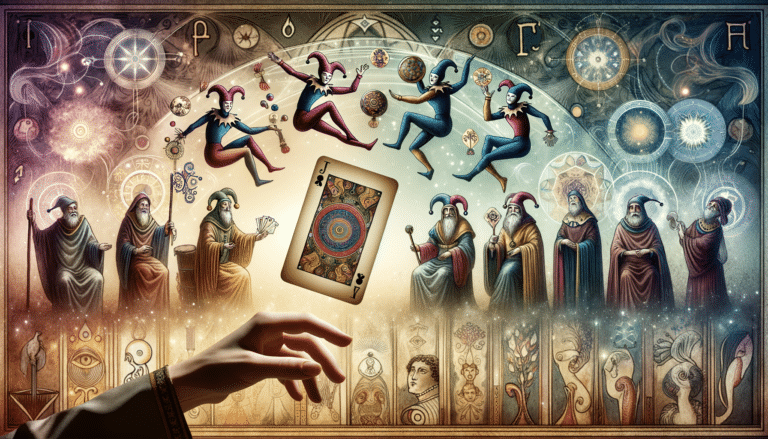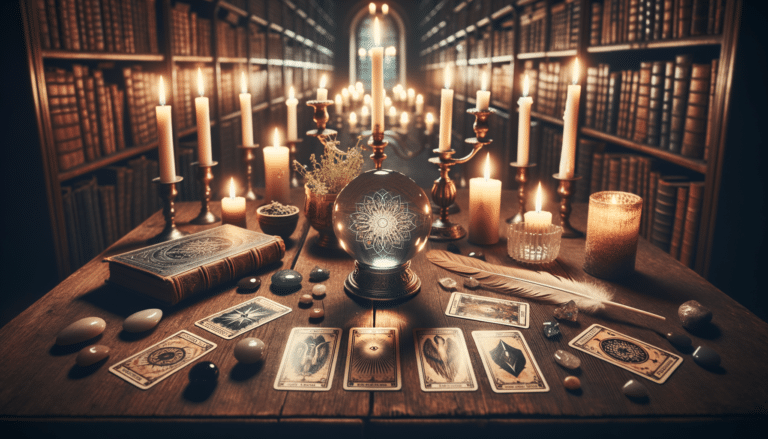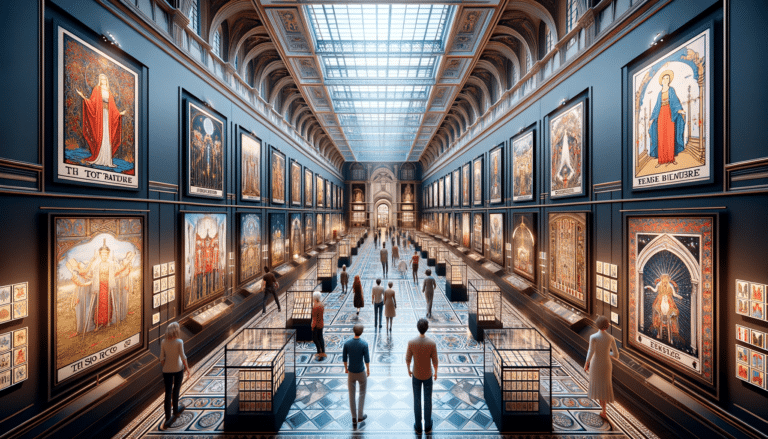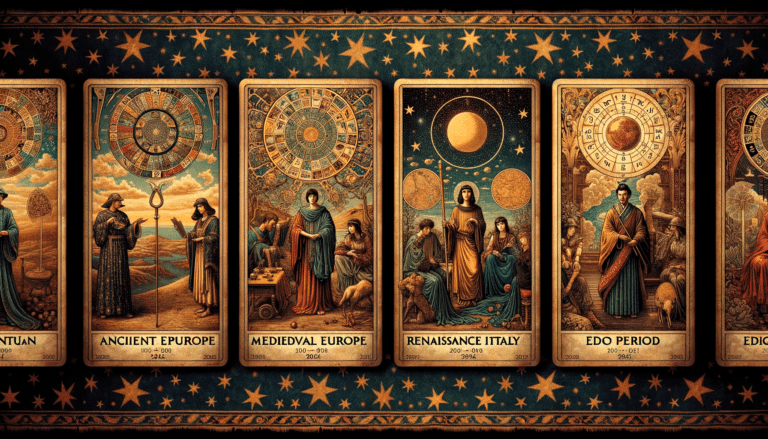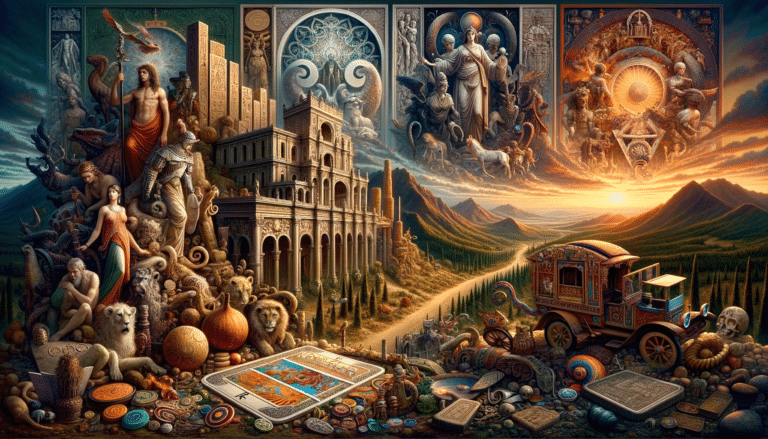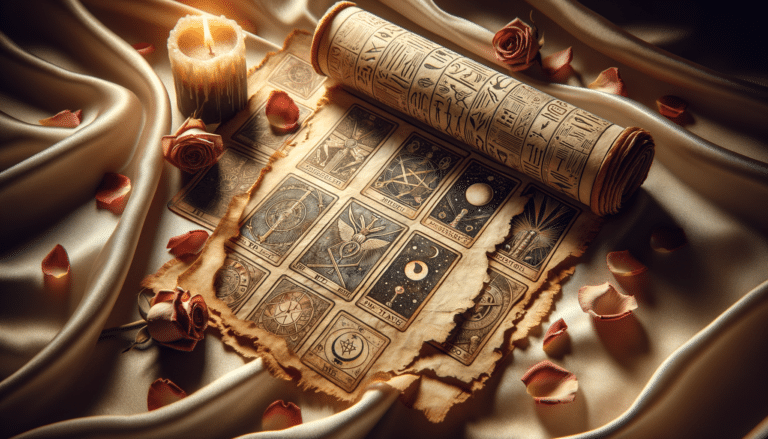Exploring the Tarot Card Meanings Historical Evolution
In the dance of destiny, tarot cards have shuffled through time, their meanings evolving as much as the societies that used them. You might find it intriguing that these cards were once mere game pieces, their esoteric associations non-existent.
As you delve into their history, you’ll uncover how mysticism and the occult breathed new life into the symbols, infusing them with deeper significance. Cultural shifts and societal changes constantly molded their interpretations, ensuring that the cards reflected the evolving human psyche.
Technological advancements made tarot more accessible, broadening the spectrum of influence and diversity in understanding. You’re now witnessing an era where psychology and tarot intersect, offering a contemporary lens through which to view these ancient archetypes.
This evolution is a testament to humanity’s unending search for meaning in the mysterious.
Key Takeaways
- Tarot card meanings have evolved over time, reflecting the collective understanding of the human mind and the evolving understanding of psychology.
- Tarot cards have adapted to cultural and societal changes, incorporating evolving social norms and reflecting changing values and knowledge.
- The introduction of Kabbalistic concepts and adoption by occult societies enriched the symbolism of tarot cards.
- Technological advancements, such as printing innovations and digital divination tools, have influenced the accessibility and democratization of tarot, further contributing to the evolution of tarot card meanings.
Origins of Tarot Cards
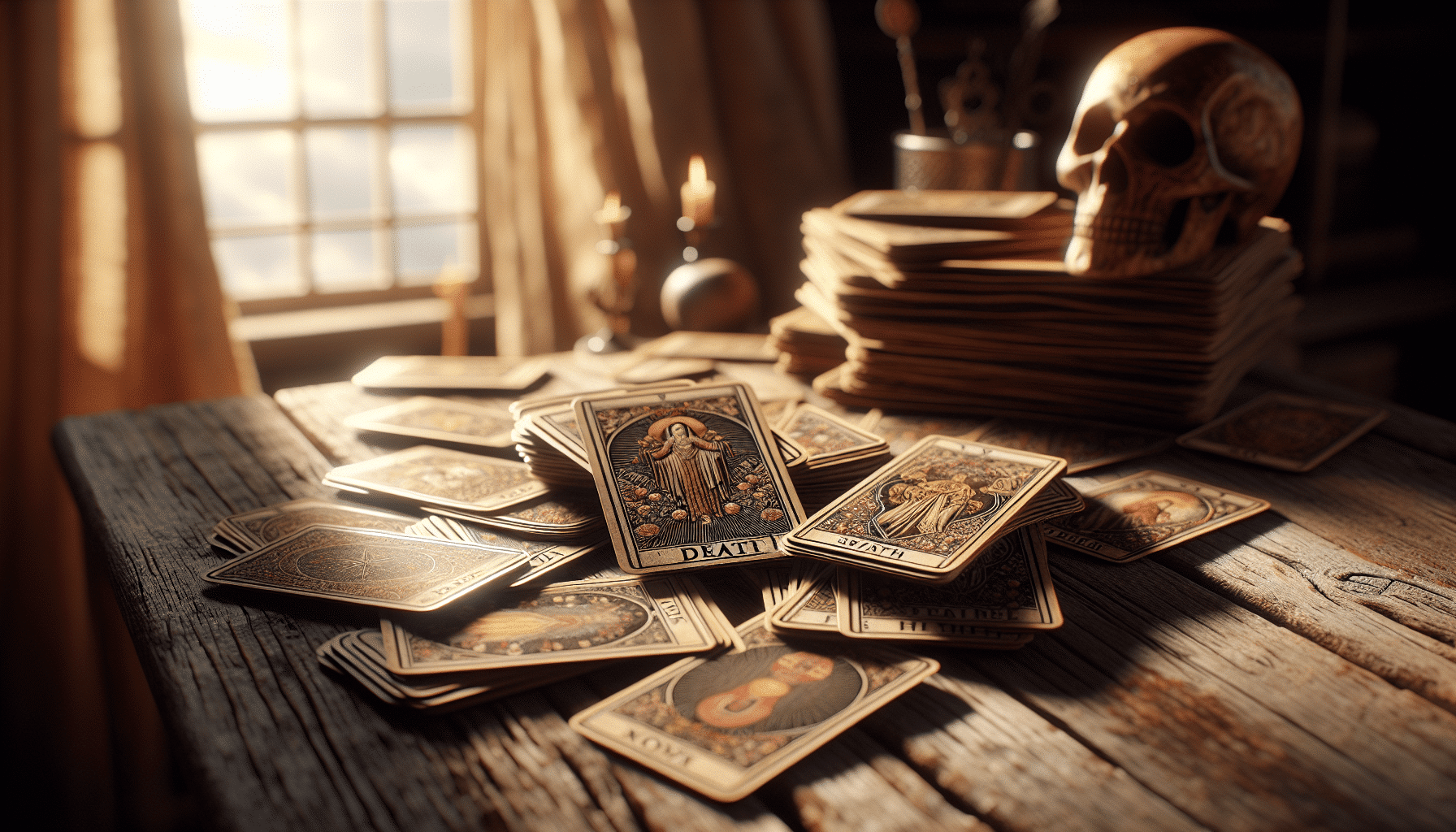
Understanding the evolution of tarot card meanings requires delving into their enigmatic inception, which you’ll find originated as playing cards in 15th-century Europe. Initially, these cards were used for Renaissance games, specifically in Italy, where they became known as tarocchi, likely an adaptation of the game’s name. It wasn’t until later that the mystical interpretations you’re familiar with began to take shape.
These early decks were filled with medieval symbolism, something that was both a reflection of and a commentary on society at the time. The images depicted a range of scenarios and characters, from the mundane to the celestial, embedding each card with a complex set of meanings that went beyond simple gaming purposes.
You’ll notice that the structure of the tarot deck is quite telling of its origins. The Major Arcana, for instance, portrays archetypal figures and narratives that resonate with universal themes of human experience, suggesting a deeper purpose than mere entertainment. As you explore the cards’ past, you’ll understand how tarot evolved from a courtly pastime into a tool for divination, absorbing layers of esoteric knowledge that has captivated seekers for centuries.
Influence of Mysticism

Every tarot card you encounter has a rich tapestry of mystic significance that has grown more intricate with time. This deepening complexity owes much to the influence of mysticism, which has intertwined with tarot tradition, infusing it with layers of esoteric meaning and linking it to broader divination methods and psychic phenomena.
Here’s how mysticism has shaped tarot’s evolution:
-
Introduction of Kabbalistic Concepts: Mystics have correlated tarot imagery with the Kabbalah’s intricate system of metaphysical thought, enhancing the interpretive depth of the cards.
-
Adoption by Occult Societies: Groups like the Hermetic Order of the Golden Dawn incorporated tarot into their practices, which included ritual magic, astrology, and alchemy, further enriching the cards’ symbolism.
-
Psychic Phenomena Association: Tarot has been increasingly associated with psychic phenomena, with readers using the cards as a medium to unlock intuition and tap into the subconscious.
You’re not just holding pieces of decorated paper; you’re engaging with a tool that’s been shaped by centuries of mystical thought. Whether you’re a skeptic or a believer, understanding these connections can deepen your appreciation for tarot’s multifaceted nature and its place within the broader context of mystical and psychic practices.
Check out our Tarot Decks & Oracle Cards here…
Cultural and Societal Changes

You’ve seen how mysticism influenced tarot, but it’s equally important to consider the role of shifting beliefs and norms in society.
As cultures evolve, so too do the interpretations and applications of tarot cards to reflect contemporary values.
These cards aren’t static; they’ve adapted alongside esoteric practices to stay relevant through time.
Historical Belief Shifts
Tarot card meanings have transformed over time as society’s beliefs and values have shifted, affecting how you interpret these mystical symbols today. Originally, tarot cards were tied closely to religious symbolism and could be subject to religious persecution. Their transition from game cards to tools of divination involved adapting to cultural expectations and avoiding conflicts with dominant religious institutions. Artistic symbolism played a crucial role, as artists infused cards with layers of esoteric meaning that reflected evolving societal values.
Here’s how historical belief shifts have influenced tarot card meanings:
-
Religious Tolerance: Increased secularism allowed tarot to flourish outside strict religious contexts.
-
Psychological Insight: Modern interpretations often emphasize personal growth and mental health.
-
Cultural Fusion: Cross-cultural exchanges have introduced diverse symbols and interpretations into the tarot lexicon.
Social Norms Influence
In light of evolving social norms, cultural and societal changes have significantly shaped the interpretation of tarot card meanings. As you delve into the world of tarot, it’s clear that card symbolism doesn’t exist in a vacuum. It’s a reflection of the times, mirroring current values and beliefs.
Normative taboos, once prominently depicted or implied in certain cards, have shifted, altering how these cards are perceived and understood.
For example, images that were once seen as scandalous or controversial might now be interpreted more openly due to a society’s progressive stance on topics like sexuality and gender. You’re witnessing a living tradition, where the cards adapt to the ever-changing landscape of social consciousness, ensuring that tarot remains relevant and resonant with contemporary seekers.
Esoteric Practices Adaptation
As cultural tides turn, your understanding of tarot’s esoteric meanings transforms in tandem with these societal shifts. The mystical symbolism within the tarot deck has always been a canvas for the collective unconscious, reflecting the changing values and knowledge of societies. Divination methods, including tarot, adapt as people seek new ways to connect with the spiritual and the metaphysical.
Here’s how tarot has adapted:
-
Incorporating Modern Archetypes: Tarot imagery and interpretations now include contemporary figures and ideas, making the cards more relatable.
-
Technological Integration: Online readings and digital decks cater to the tech-savvy generation, influencing how tarot is perceived and practiced.
-
Diverse Cultural Expressions: Tarot decks now feature diverse cultural themes, embracing global narratives and inclusive imagery.
Learn more with these best tarot books here…
Technological Advancements
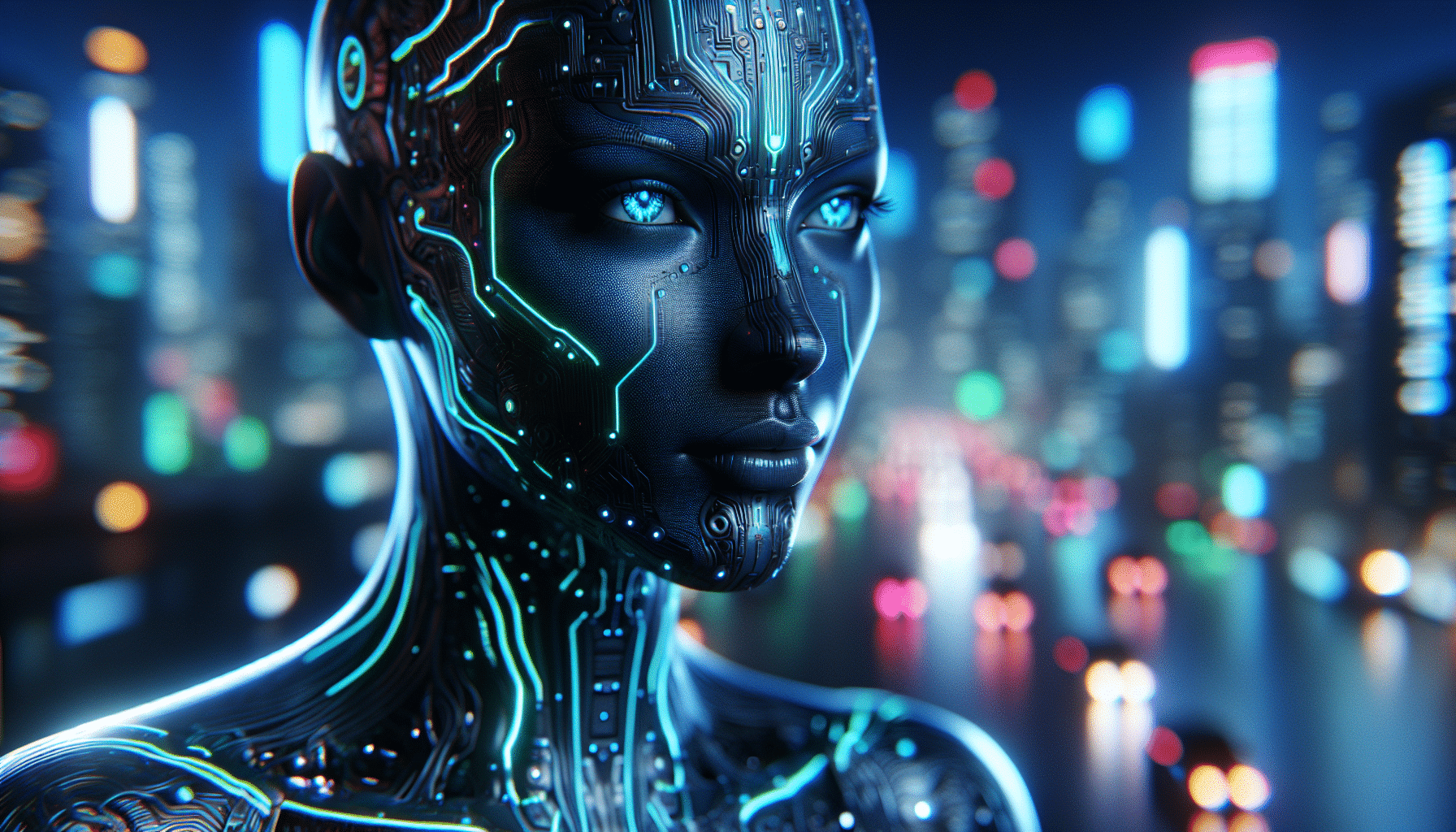
Through the lens of technological advancements, you’ll discover how printing innovations directly influenced the evolution of tarot card meanings. Initially, tarot cards were hand-painted, a laborious process that made them a luxury item available only to the elite. However, as card printing technology advanced, tarot became more accessible, changing not only who could use them but also how they were interpreted. Mass production meant that the imagery could be standardized, leading to more consistent meanings across different users and regions.
In the digital age, you’ve seen an even more significant shift. Digital divination tools have emerged, allowing tarot readings to be performed online. This new format has further democratized tarot, making it accessible to anyone with an internet connection. The digital interpretation tools often include comprehensive databases of meanings, which can vary slightly from traditional interpretations due to cultural and societal changes reflected in the digital sphere.
These advancements have shaped the tarot into a tool that’s not only used for personal insight but also as a means of connecting a global community of enthusiasts. As you continue to engage with tarot in its modern forms, remember that technology has been a key player in its evolution, continuously reshaping its symbols and significance.
Learn even more secrets of history of tarot here…
Diverse Interpretative Approaches
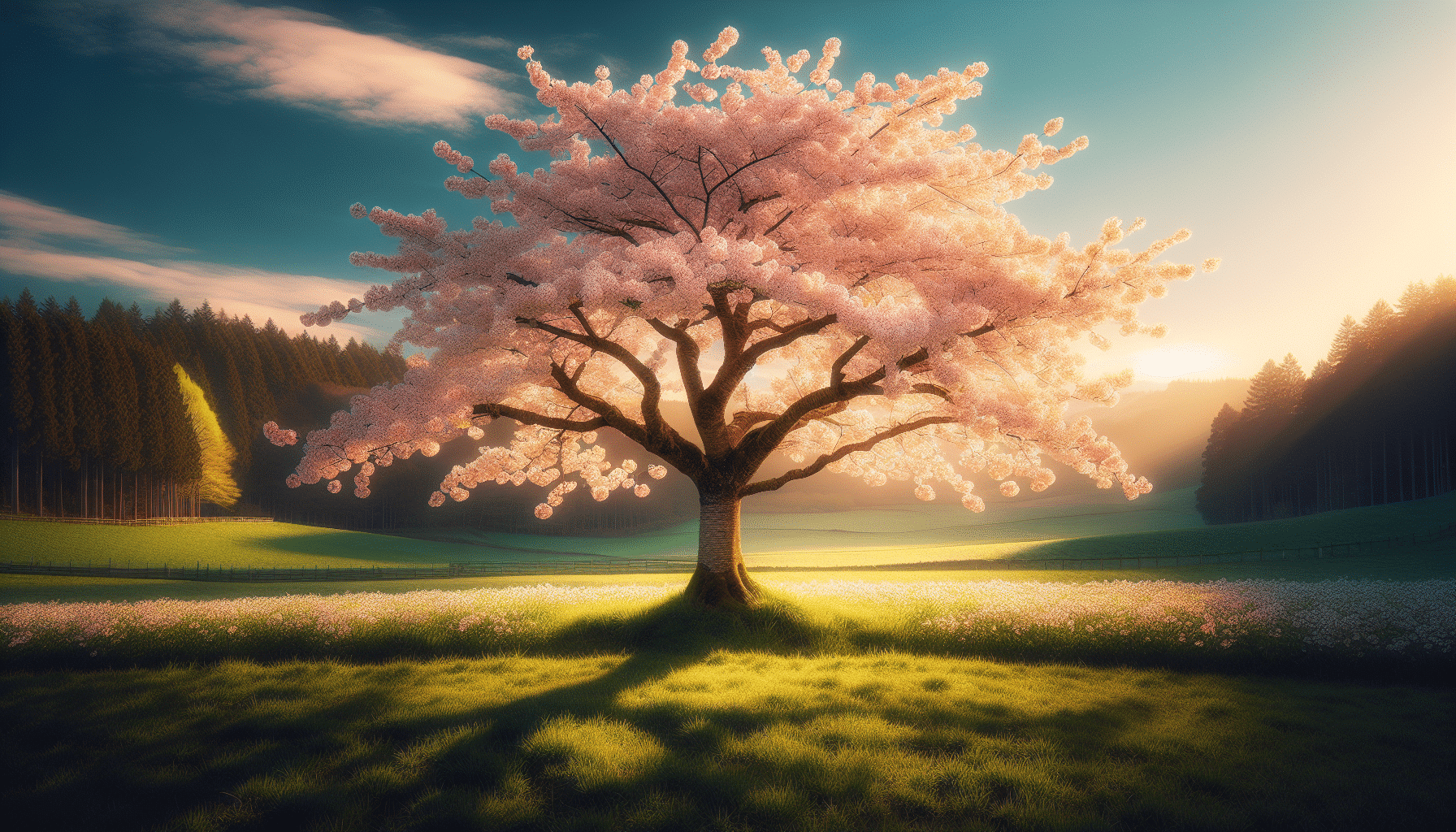
Exploring diverse interpretative approaches, you’ll notice that tarot card meanings aren’t only shaped by technology but also by the myriad cultural and individual perspectives of readers worldwide. The interpretive flexibility of tarot allows each reader to bring their own experiences and cultural backgrounds into the reading, making each interpretation unique.
When you delve into the world of tarot, you’ll find that:
-
Card symbolism varies significantly across different tarot decks, with images reflecting various mythologies, artistic styles, and historical periods.
-
Interpretations of the same card can differ based on the reader’s intuition and the querent’s (person receiving the reading) specific circumstances.
-
Cultural traditions influence how readers perceive and explain the cards, with some societies imbuing certain symbols with unique significance that wouldn’t necessarily translate globally.
Understanding these factors, you’ll appreciate that there isn’t a one-size-fits-all interpretation of tarot cards. The beauty of tarot lies in its rich tapestry of meanings, offering a vast array of insights that resonate on a personal level.
As you continue your journey with tarot, embrace the interpretive flexibility and let your own intuition guide you in discovering the multifaceted layers of card symbolism.
Modern Psychology Integration
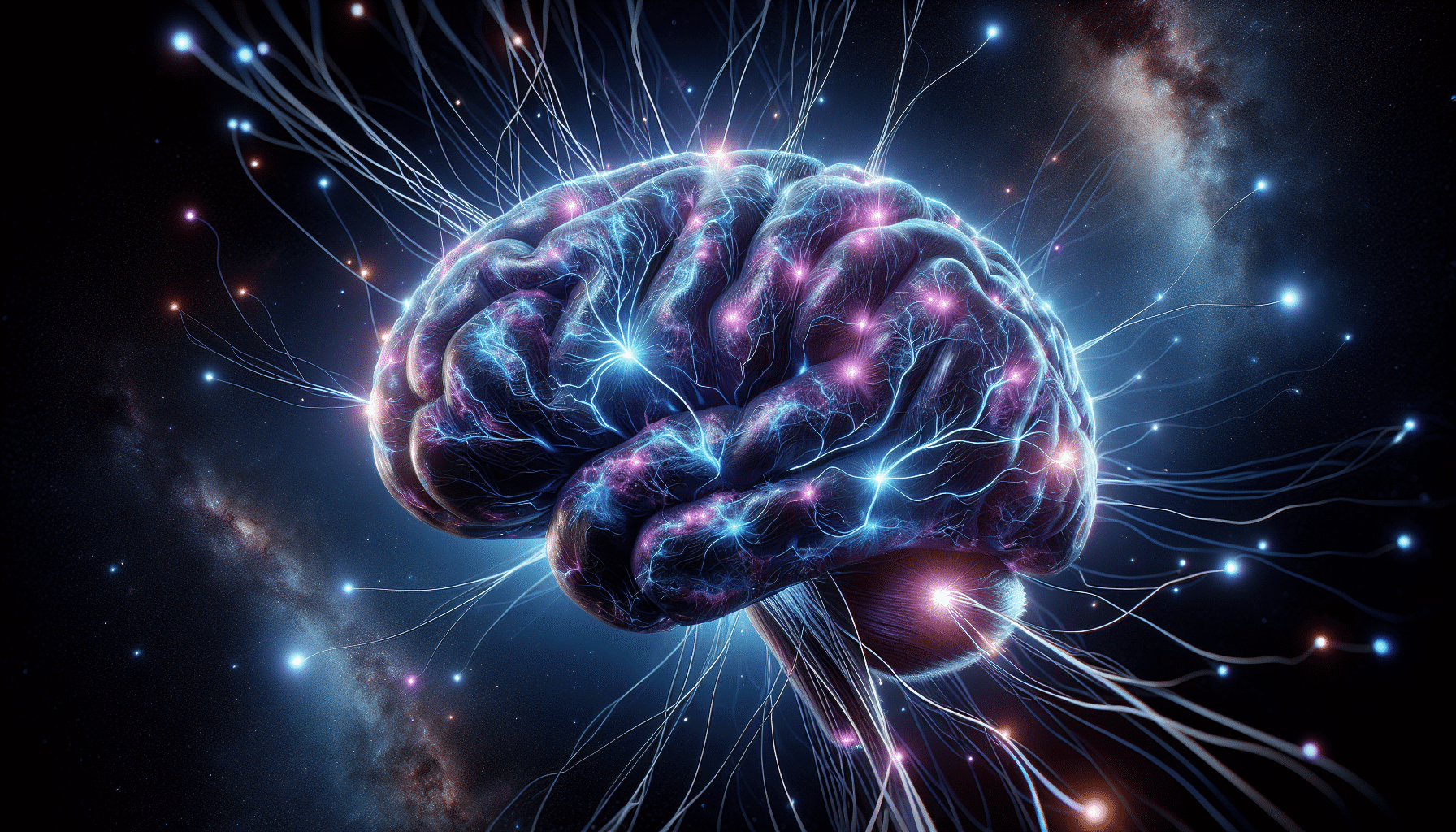
Integrating modern psychology, you’ll find that tarot readings often mirror inner psychological states, offering insights that reflect your subconscious mind. The images and scenarios depicted in tarot cards are rich with symbolic resonance, tapping into the universal themes and psychological archetypes that Carl Jung described. These archetypes are innate, universal psychic dispositions that form the substrate from which the basic themes of human life emerge.
As you dive into tarot, you’re engaging with a form of active imagination, allowing you to explore different facets of your psyche. The cards serve as a mirror, reflecting aspects of your personality and life that you mightn’t be consciously aware of. Through this lens, a tarot reading can be a powerful tool for self-reflection and personal growth.
The Fool, The Empress, The Hermit – each card embodies an archetype that resonates with shared human experiences and emotions. Working with these symbols can bring clarity to complex psychological states, acting as a catalyst for introspection and understanding.
In essence, the evolving meanings of tarot cards over time mirror the evolution of our collective understanding of the human mind. By recognizing these patterns, you’re tapping into a deep well of psychological insight.
Conclusion
So you’ve traipsed through the foggy history of tarot, from medieval parlor games to mystical mumbo-jumbo.
Society flipped, tech exploded, and suddenly every card slinger with a crystal ball is a shrink.
Congrats, now every time you pull the Death card, you’re not dying, you’re just ‘transitioning’!
Remember, it’s all in the cards – or so the latest psychic app on your smartphone says.
Keep shuffling; maybe next time, you’ll draw some common sense.
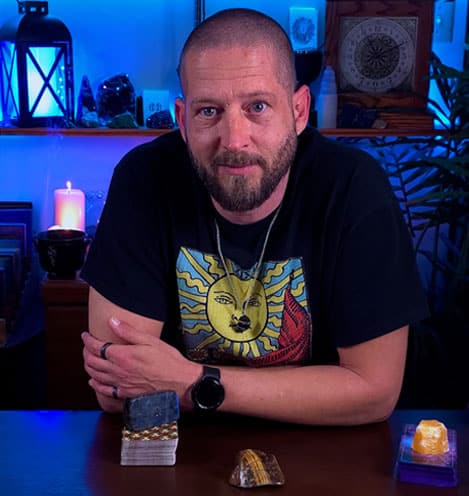
About The Author – Allen Hill
Allen Hill, the force behind Unknown Truth Tarot, has a YouTube following 6-times bigger than the population of his hometown, Miamisburg, Ohio. From his spiritually rich blog on Tarot and crystals to his role as CEO of The Unknown Truth Tarot Metaphysical Shop, Allen’s passion for the metaphysical shines through.
A master Tarot reader and “crystal junkie,” Allen is also a devoted dad to Dylan, 10, and Destiny, 24. When he’s not immersed in the world of Tarot and crystals, he enjoys poker and video gaming sessions, often humorously outplayed by Dylan.
Follow Allen on Twitter, Instagram, Facebook, TikTok, and subscribe to his Unknown Truth Tarot YouTube channel to join him on a journey of spiritual growth and self-discovery.

